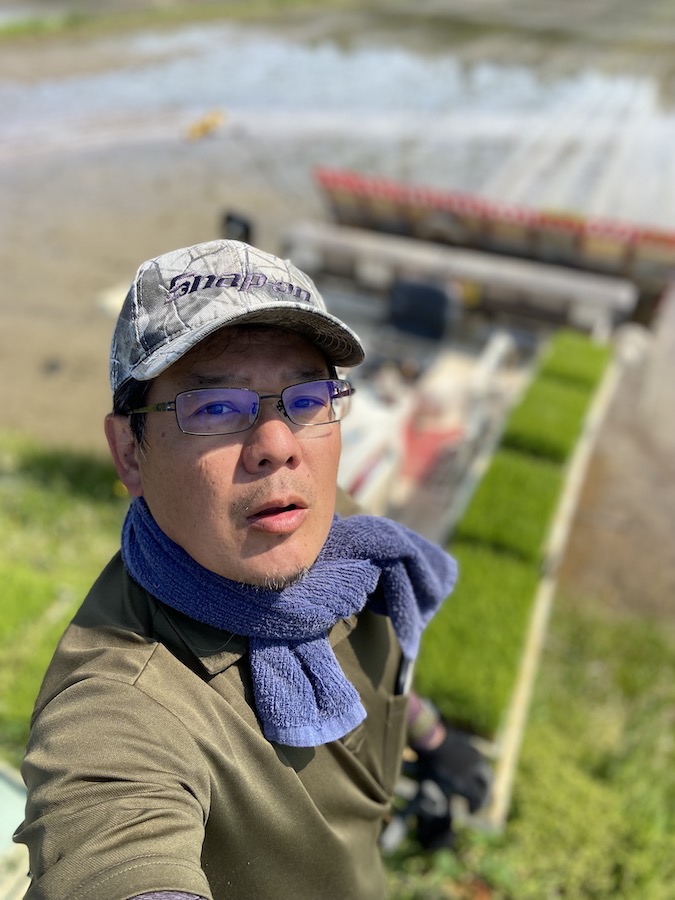
A swallow chick opens its mouth wide, waiting to be fed. (©Fumie Oyama)
このページを 日本語 で読む
Swallows are often associated with spring, as that's when they arrive in Japan. In reality, though, they can be seen throughout the warmer months, from spring to autumn.
This time, instead of focusing on the crested ibis — a nationally designated Special Natural Monument — we're turning our attention to the swallow. This bird lives closely alongside humans, often building its nest under the eaves of houses or in other places near people.

Chirp chirp chirp!
Early in the morning, five baby swallows perch in neat intervals on a wire stretched over our barn, chirping loudly in chorus. Still too young to catch insects on their own, they're fed by their attentive parents.

Swallows are monogamous, and both parents work together to raise their young. This morning, the pair were flying back and forth at dizzying speed, feeding their chicks one by one — so quickly it was hard to follow with the eye.

What's especially interesting is how they feed each chick in turn, moving from one to the next. No matter how loudly a chick calls out, it never gets fed twice in a row.
Our Feathered Neighbors
Around March, swallows migrate to Japan from Southeast Asia — places like the Philippines and Thailand. They choose to nest close to humans, often under the eaves of houses or storefronts. The female lays one egg a day, with a total of three to seven, and the pair raises their chicks together. In autumn, they migrate back to warmer regions with their offspring.
Because they're vulnerable to predators like crows, swallows may breed two or three times a year. They build their nests from mud, usually gathered from rice paddies, and dry grass, carrying it in their beaks and stacking it like bricks onto walls or shelves.
Swallows feed on insects such as dragonflies, butterflies, flies, mosquitoes, and grasshoppers. Unlike sparrows, they don't eat rice grains, which is why they've long been seen as beneficial birds. In Japan, a swallow nesting on your house is considered a sign of good fortune. Even if they dirty the walls or drop waste beneath their nests, people don't chase them away — instead, they welcome them.

Declining Population
Unfortunately, swallow populations are declining across Japan, largely due to the loss of natural habitats and farmland. According to the Wild Bird Society of Japan, surveys by the Ministry of the Environment and local governments like Osaka and Ishikawa have all reported a drop in swallow breeding.
Masaoki Tsuchiya, head of the Sado branch of the Wild Bird Society of Japan, explains:
"We haven't done a formal survey on Sado Island, but it's clear that swallows are declining. Many of the shopping streets where they used to nest are now shuttered, and the number of vacant homes is growing. Swallows rely on living near people for protection from predators like snakes and crows — but as people disappear, so do the swallows."
Living with Nature
The first spring after we moved to Sado Island, a swallow came to our house. It flew around as if inspecting the place and, to our surprise, began bringing mud to build a nest — right on top of the kitchen light. As much as we loved the idea, a kitchen isn't the place for a bird's nest, with droppings and bugs creating hygiene concerns. So, reluctantly, we had to discourage them from nesting there.
Not long after, we adopted three rescue cats. Maybe that's why the swallows never tried to build a nest at our house again. We would've been happy to have them at the entrance or under the eaves, so it was a bit disappointing.
But then, something curious happened: after fledging from a nest next door, the young swallows began perching on the wire above our barn for several days. Their cheerful chorus filled the mornings. After a few days, once they had learned to find food on their own, they disappeared, and quiet returned.
What's odd is that our neighbor also has a cat — just one — and yet swallows still nest there. Does the number of cats matter? Only the swallows know for sure.
Inbound visitors to Japan are often surprised that people don't remove swallow nests, even when they stain the walls or leave droppings. Perhaps these nests are more than just homes for birds — they may symbolize the Japanese spirit of living in harmony with nature and the creatures we share it with.
This report was first published on Japan 2 Earth, a JAPAN Forward website featuring Japan's SDGs initiatives.
RELATED:
- An 18-Year-Old Crested Ibis's Spring Romance
- The Secret Life of Japan's National Bird, the Green Pheasant
- First Crested Ibis Nest Confirmed as Spring Arrives in Full Bloom
- The Crested Ibis and the Secrets of Their Home Life
Author: Fumie Oyama

Fumie Oyama is a two-time winner of the Japan Newspaper Publishers & Editors Association Award as a photographer for The Sankei Shimbun. After covering the reintroduction of the crested ibis to the wild for 11 years, Oyama left the company in 2020 to move to Sado Island. There, he continues to photograph the ibis and other wildlife while engaging in farming. He currently promotes the charms of Sado Island as a photojournalist. Follow Fumie Oyama on Instagram.
このページを 日本語 で読む






